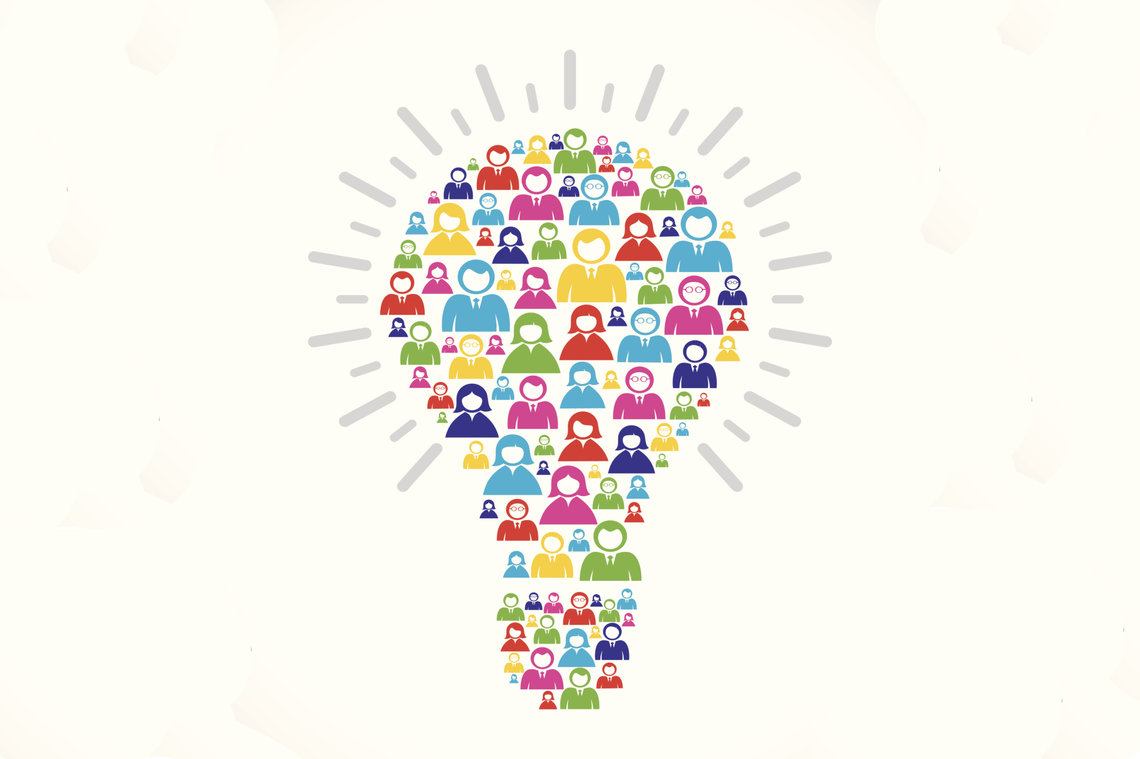Crowdsourcing has become a prominent business model used in today’s market economy. In this age of technology, and more specifically digitization, crowdsourcing is just one of the many offspring that has arisen in the last decade. Although communal knowledge has existed long before crowdsourcing was adopted, it is however the participatory aspect in crowdsourcing that has been troublesome.
The concept of crowdsourcing can be defined as an “online, distributed problem solving and production model whereby an organization leverages the collective intelligence of an online community for a specific purpose. It is a blend of traditional, top-down, hierarchal program management and bottom-up open innovation process” (Brabham 395). It is the mergence of top-down and bottom-up, or rather the professional with non-specific that has created an issue. Brabham states that a stigma of amateurism has been attached to individuals participating in crowdsourced activities (396). This social divide between professionalism and amateurism, Brabham states, is unnecessary. Although Brabham’s point is not entirely misplaced, it most be noted that his analysis seems to focus on specific type of targeted individuals of crowdsourcing.
The type of individuals participating in crowdsourcing activities is planned by organizations. The project proposed by the organization must be tailored to the target audience they wish to have participate. Brabham seems to focus on those that require a more professional skillset, and in most cases the activity proposed takes shape as a competition. This type of audience engagement already presumes that a high quality is expected. However there are different types of individuals that participate in crowdsourced projects. There are primarily two types of crowdsourced activities; ones that require a balanced relationship between the organization and the individuals, and ones that are driven by communities. Brabham’s research focuses on the former, whereas the latter would constitute of projects such as Wikipedia. The distinction perhaps between the two types of crowdsourcing is the control or freedom given to the participants. The difference between the types of project also gives an indication of standards expected of participants. Brabham’s suggestion that amateur crowds do not exist in crowdsourcing is therefore not entirely true. Yet it is also the business model that suggests that the ownership of the content created in the project belongs to the organization –the professionals-.
Although the business model attempts to cleverly disguise the outsourcing of work and leaves organizations profiting the most, crowdsourcing has received positive feedback. The strategy has enabled the humanities to adapt to the digital age. As a branch humanities have had the most trouble coping with technological advances as its research follows traditional methodologies of textual and fact-checking research. Crowdsourcing however has reshaped research methods in the humanities. It has enabled various academic disciplines to engage a contemporary audience for which participation is a great source of engagement. By doing so, crowdsourcing has recontextualised the humanities. It has also facilitated the development of new data sets and research methods. Crowdsourcing encourages the creation of content which can be further used for analysis by researchers, and encourages interaction between individuals. Crowdsourcing has created given a whole new meaning to data, data creation and research.
The Rijksstudio is an example as to how crowdsourcing has paid off in the humanities. A contemporary debate in museum studies concerns itself with what a museum ought to be today. History shows that museum practice was used as a source of education and political power. However museums today need to be recontextualised. The Rijksstudio shows how a museum can recontextualise itself. The Rijksstudio is the digital counterpart of the famous Dutch museum, the Rijksmuseum, and was launched in 2012 as part of the ‘return’ of the museum from its 10 year renovation. Unlike other museum websites, the Rijksstudio offers its visits the opportunity to engage with the museum’s artworks in an interactive manner by enabling users to create their own masterpieces based on artworks. By engaging the digital audience of the 21st century, the Rijksstudio has successfully recontextualised itself. How the Rijksstudio has benefited the museum is twofold (1) the Rijksstudio can collect data of the artworks most interacted with; and (2) the Rijksstudio has created a contest for which they award the opportunity to exhibit the winning content in the museum itself. Crowdsourcing has enabled a historical institution like the Rijksmuseum to stay relevant in contemporary society. However it also requires a certain type of skillset, but does not exclude ‘amateurs’ which Brabham seems to suggest crowdsourcing does. Hence Crowdsourcing has been (and will continue to be) beneficial to the humanities.
 Maddie Turner
Maddie Turner